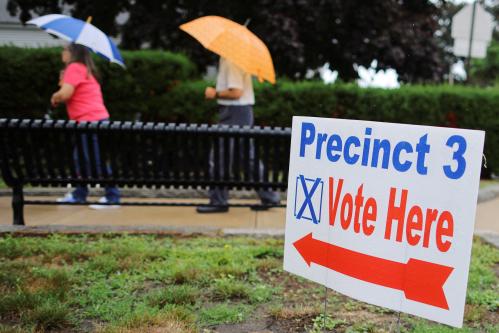This election year has been defined in large part by turmoil at the top of both political parties, embodied by Donald Trump on the right and Bernie Sanders on the left. But despite the many signs of revolution in the presidential contest, the real test of a durable revolt is what happens in the rest of the political party.
And so far, not much has happened down ballot. On the contrary, voters are demonstrating a fair amount of complacency when it comes to elections closer to home.
The most recent example is Paul Ryan’s overwhelming primary victory against Paul Nehlen, whose campaign persona was both tattooed biker and businessman. Nehlen was a big admirer of Donald Trump, echoing his anti-Muslim rhetoric and criticizing Ryan as a “soulless globalist” for his support of free trade. Trump had kind words for Nehlen. Other far right conservatives like Sarah Palin went so far as to predict that Ryan would be “Cantored”—a reference to Eric Cantor, the Republican House Majority Leader who lost his primary a few years ago to an unknown Tea Party candidate.
But in the end Ryan prevailed easily, besting his Trump-clone opponent 84.1 percent to 15.9 percent, winning 57,391 of the 68,243 votes cast.
So far this year, the Ryan victory has been the norm all over the country. Only four incumbent members of Congress have been defeated. One Democrat, Chaka Fattah (D-PA-2), was indicted (and later convicted) on charges of corruption—one of the most common causes for defeat in a congressional primary. No other Democrats have been ousted in primaries. Two others, both Republicans, Renee Ellmers (R-NC-2) and Randy Forbes (R-VA-4), were victims of redistricting that forced them to face other incumbents. Shifting district lines are another common reason why incumbent members of Congress get defeated.
The fourth incumbent defeat occurred in a closely watched race in the “Big First” district in Kansas. Congressman Tim Huelskamp—an incumbent Republican, staunch Tea Party member, and constant thorn in the side of the Republican House leadership—went down in a substantial defeat against a more mainstream, Chamber of Commerce-backed Republican, Roger Marshall. This was a political rejection that illustrated how limited the revolution was.
So just where is the revolution we’ve heard so much about this year? As we know from decades of evidence, the power of incumbency is substantial. But we also know that every once in a while the electorate expresses extensive displeasure with the status quo; the result is what the political scientists call “a re-aligning election” and what the politicians call a “wave” election. In those elections, turmoil at the top is felt all the way down the ticket: think Roosevelt’s huge victory in 1932 or Reagan’s victory in 1980.
Whatever is going on this year seems to be limited thus far to the presidential level, even though Congress has experienced its lowest approval ratings in history. Of course, it’s too early to declare the revolution over. It may be that in 2018 and beyond, Trump clones on the right and Bernie Sanders clones on the left will disrupt primaries and change the face of Congress in much the same way that the Tea Party did in 2010. But so far, the revolution at the top of both parties doesn’t seem to have legs.
Elaine C. Kamarck is a Senior Fellow at the Brookings Institution and author of Primary Politics: Everything You Need to Know about How America Nominates Its Presidential Candidates. She is a superdelegate to the Democratic convention.






Commentary
Paul Ryan, Donald Trump and complacency in the down-ballot races
August 10, 2016